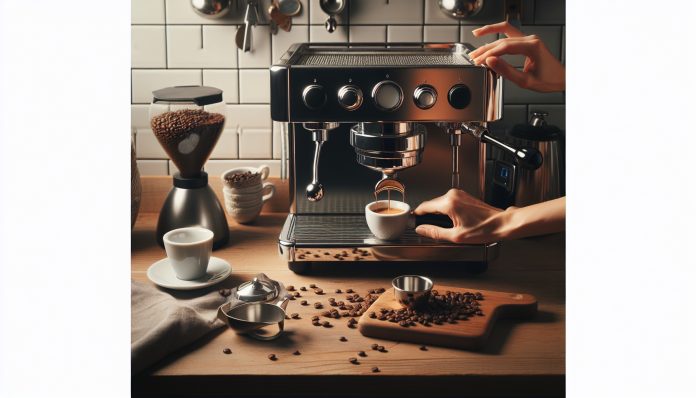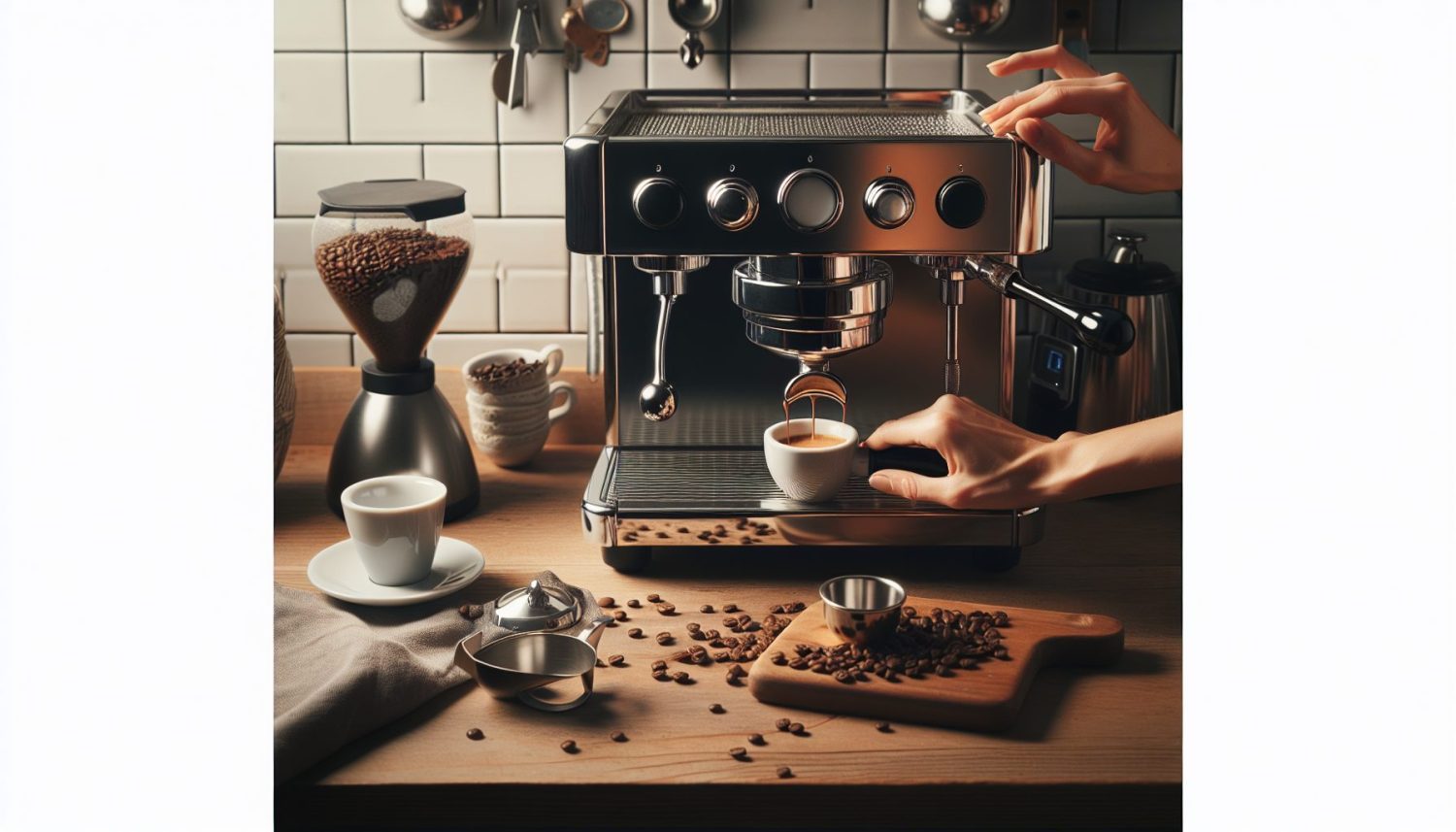Step into the wonderful world of espresso brewing with our easy-to-follow tips for beginners. Whether you’re a coffee aficionado looking to master the art of brewing espresso at home or a curious beginner eager to venture into the realm of rich, aromatic flavors, we’ve got you covered. In this article, we’ll share essential tips and tricks that will demystify the espresso brewing process, helping you create the perfect cup of espresso every time. From selecting the right beans to mastering the art of grinding and extracting, we’ll guide you through the step-by-step process, ensuring a delightful coffee experience that will leave you craving for more. So, grab your favorite espresso machine and let’s embark on this flavorful journey together!
Choosing the Right Espresso Machine
When it comes to choosing the right espresso machine, there are a few factors to consider. First and foremost, it’s important to evaluate your budget. Espresso machines can range in price from affordable to quite expensive, so it’s essential to establish a budget that aligns with your financial situation.
Once you have determined your budget, the next step is to evaluate the machine’s features. Consider what functionalities are important to you. Do you prefer a machine that is manual, semi-automatic, or fully automatic? Each type of machine offers different levels of control and convenience, so it’s essential to choose one that suits your personal preferences and skill level.
It’s also important to do your research and read reviews from other espresso enthusiasts to get an idea of the performance and reliability of different machines. By taking the time to consider your budget and evaluate the machine’s features, you can make an informed decision and choose the right espresso machine for your needs.
Selecting the Right Coffee Beans
While having a high-quality espresso machine is crucial, it’s equally important to choose the right coffee beans for your brew. When it comes to espresso, it’s generally best to choose a coffee blend specifically designed for espresso. These blends are often a combination of different coffee beans, carefully selected and roasted to bring out the best flavors in an espresso shot.
Another factor to consider when selecting coffee beans is the roast level. Espresso is traditionally made with darkly roasted beans, as they tend to have a more robust and intense flavor profile. However, if you prefer a milder taste, you can opt for a medium or medium-dark roast. Ultimately, the choice of roast level depends on your personal taste preferences.
Lastly, freshness is key when it comes to coffee beans. To ensure that you’re getting the best flavor from your espresso, it’s important to choose beans that have been recently roasted and stored properly. Look for beans with a roast date on the packaging, and try to use them within a few weeks of that date. Storing your beans in an airtight container in a cool, dark place will help to preserve their freshness and flavor.
Grinding the Coffee Beans
To achieve a delicious espresso shot, investing in a high-quality burr grinder is essential. Unlike blade grinders, which can produce inconsistent particle sizes, burr grinders ensure a uniform grind size, which is crucial for an even extraction. This helps to maximize flavor and create a balanced espresso.
When grinding coffee beans for espresso, it’s important to adjust the grind size according to your machine’s specifications. Generally, espresso requires a fine grind, similar to granulated sugar. However, it’s worth experimenting with different grind sizes to find the perfect balance for your taste preferences.
In addition to using a quality grinder, how you store your coffee beans also impacts the freshness and flavor of your espresso. It’s important to keep your beans in a cool, dry place away from direct sunlight and moisture. Avoid storing them in the refrigerator or freezer, as this can introduce humidity and affect the flavor of the beans.
Tamping the Ground Coffee
Tamping is an essential step in the espresso brewing process that involves evenly distributing the coffee grounds in the portafilter basket and applying consistent pressure. To achieve a uniform extraction and avoid channeling (uneven water flow), it’s crucial to tamp the grounds properly.
To tamp the ground coffee, start by distributing the grounds evenly in the portafilter basket. Using a tamper, apply downward pressure with a twist motion to create a level, compacted bed of coffee. It’s important to apply consistent pressure without exerting too much force, as this can result in over-extraction and a bitter taste or under-extraction and a weaker shot.
Water Temperature and Quality
The water you use for brewing espresso plays a significant role in the taste and quality of your shot. It’s important to use filtered or bottled water to ensure that the flavor of your espresso is not affected by impurities or chlorine found in tap water. Additionally, using cold, fresh water will help to maximize the extraction process.
The optimum water temperature for brewing espresso is between 195 and 205 degrees Fahrenheit (90-96 degrees Celsius). Water that is too hot can result in over-extracted and bitter coffee, while water that is too cold can lead to under-extraction and a weak shot. Investing in a high-quality espresso machine with precise temperature control can help ensure that the water reaches the optimal temperature for brewing.
It’s worth noting that using boiling water is not recommended, as it can scorch the coffee and result in a burnt taste. Allow the water to cool slightly after boiling before adding it to your espresso machine.
Brewing Ratio for Espresso
The brewing ratio refers to the amount of coffee used in proportion to the amount of water during the brewing process. For espresso, a common brewing ratio is 1:2, which means using 1 part coffee to 2 parts water. This ratio often produces a balanced shot with rich flavor and proper extraction.
However, brewing ratios can vary depending on personal taste preferences. Some espresso enthusiasts prefer a stronger, more concentrated shot and may use a higher coffee-to-water ratio, such as 1:1.5 or even 1:1. On the other hand, those who prefer a milder taste may opt for a lower coffee-to-water ratio, such as 1:2.5.
It’s essential to experiment with different brewing ratios to find the one that suits your taste preferences. Remember to keep other brewing parameters, such as grind size and extraction time, consistent when making adjustments to the brewing ratio.
Brewing Process
Mastering the brewing process is key to consistently producing delicious espresso shots. There are a few steps to follow to ensure a successful brew.
First, it’s important to preheat your espresso machine. This helps to maintain a stable brewing temperature and ensures a more even extraction. Preheating can be done by running a blank shot (without coffee) through the machine or by letting it heat up for a few minutes before brewing.
Additionally, warming your espresso cups before brewing can help to maintain the temperature of your shot and enhance its flavor. Simply rinse the cups with hot water or place them on the cup warmer of your espresso machine if available.
Next, it’s time to dose the coffee grounds into the portafilter basket. The amount of coffee used will depend on your machine and personal taste preferences. It’s important to distribute the coffee grounds evenly and level the surface with a finger or tool to ensure an even extraction.
Mastering the Espresso Shot
To master the perfect espresso shot, it’s crucial to monitor the extraction time, pay attention to the color and consistency of the shot, and note the taste and aroma.
The extraction time refers to the duration it takes for the water to pass through the coffee grounds. The ideal extraction time for espresso is typically between 25 and 30 seconds. If the extraction is too fast, the shot may be weak and lacking in flavor. Conversely, if the extraction is too slow, the shot may be over-extracted and taste bitter. Adjusting the grind size and tamping pressure can help to control the extraction time.
When observing the color and consistency of the shot, a caramel-colored crema layer is often an indication of a well-extracted espresso. The crema should be thick and velvety, and it should linger on the surface for a few seconds before dissipating. Additionally, the espresso should have a smooth and balanced flavor profile, with no excessive bitterness or sourness.
Lastly, take note of the taste and aroma of the espresso shot. A well-brewed espresso should have a rich, full-bodied taste with complex flavors and a pleasant aroma. If the shot falls short in these areas, make adjustments to the brewing parameters, such as grind size or brewing ratio, and repeat the process until you achieve the desired flavor and aroma.
Steaming Milk for Espresso Drinks
If you enjoy milk-based espresso drinks like lattes or cappuccinos, mastering the art of steaming milk is essential. Choosing the right milk is the first step. Whole milk is often preferred for its creamy texture and ability to create a rich, velvety foam. However, if you prefer a lighter option, you can use skim or low-fat milk.
To steam the milk properly, start by filling a pitcher with cold milk. Submerge the steam wand into the milk and turn on the steam. Position the pitcher at an angle to create a whirlpool effect, which helps to incorporate air into the milk and create a microfoam.
As the milk begins to heat and foam, slowly lower the pitcher to keep the steam wand just below the surface of the milk. Pay attention to the temperature, as over-steaming can result in milk that is too hot and scorched.
The desired milk texture for different espresso drinks can vary. For a latte, aim for a creamy texture with a slight amount of foam on top. For a cappuccino, you’ll want more foam, with a creamy consistency underneath. It may take some practice to achieve the desired milk texture, but with time and patience, you’ll be able to create café-quality drinks at home.
Cleaning and Maintaining Your Espresso Machine
Properly cleaning and maintaining your espresso machine is essential to ensure its longevity and the quality of your brews. After each use, it’s important to clean the machine thoroughly to remove any coffee residue or oils that may affect the flavor of future shots.
Start by removing the portafilter basket and rinsing it under water to remove any leftover coffee grounds. Then, use a clean cloth or brush to wipe the group head and remove any built-up residue. It’s also important to clean the steam wand after each use, as milk residue can accumulate and affect its performance.
Regular descaling is another crucial maintenance task for espresso machines. Over time, minerals can build up inside the machine, affecting its performance and taste of the shots. Follow the manufacturer’s instructions for descaling, using a descaling solution specifically designed for espresso machines. This will help to remove any mineral deposits and keep your machine in optimal condition.
Lastly, it’s important to replace any worn-out parts as needed. This may include gaskets, seals, or filters. Regularly inspect your machine and consult the manufacturer’s guidelines for maintenance and replacement parts. By taking care of your espresso machine, you’ll ensure that it continues to produce delicious shots for years to come.
In conclusion, brewing espresso at home can be a rewarding experience, but it requires attention to detail and practice. By choosing the right espresso machine, selecting the right coffee beans, grinding them properly, tamping, and mastering the brewing process, you’ll be well on your way to brewing delicious espresso shots. Don’t forget to pay attention to water temperature and quality, steaming milk for espresso drinks, and cleaning and maintaining your espresso machine. With time and practice, you’ll be able to create café-quality espressos in the comfort of your own home. Happy brewing!







































